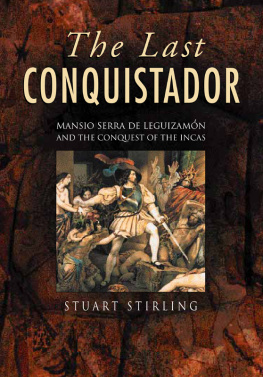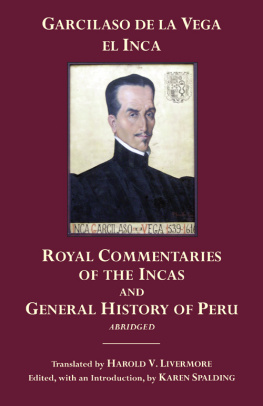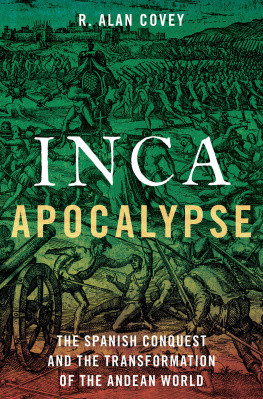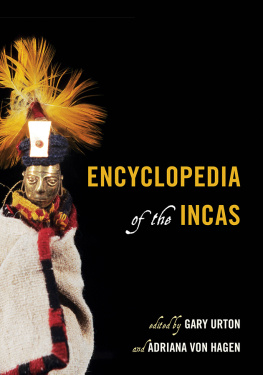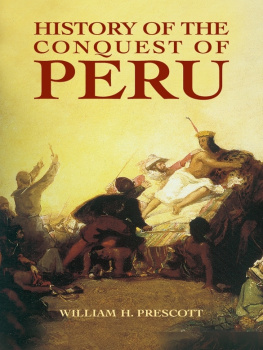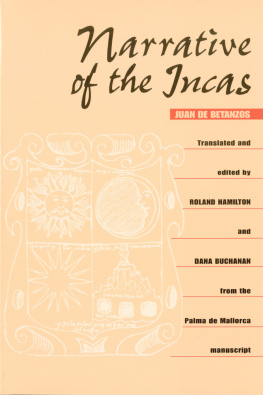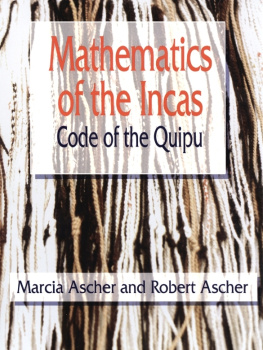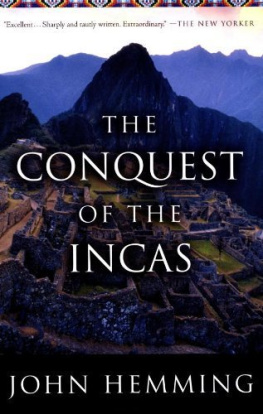The Last
CONQUISTADOR
M ANSIO S ERRA DE LEGUIZAMN
AND THE CONQUEST OF THE INCAS
STUART STIRLING

First published in 1999
The History Press
The Mill, Brimscombe Port
Stroud, Gloucestershire, GL 5 2 QG
www.thehistorypress.co.uk
This ebook edition first published in 2013
All rights reserved
Stuart Stirling, 1999, 2013
The right of Stuart Stirling to be identified as the Author of this work has been asserted in accordance with the Copyright, Designs and Patents Act 1988.
This ebook is copyright material and must not be copied, reproduced, transferred, distributed, leased, licensed or publicly performed or used in any way except as specifically permitted in writing by the publishers, as allowed under the terms and conditions under which it was purchased or as strictly permitted by applicable copyright law. Any unauthorised distribution or use of this text may be a direct infringement of the authors and publishers rights, and those responsible may be liable in law accordingly.
EPUB ISBN 978 0 7509 5284 2
Original typesetting by The History Press
To the memory of
Mara Dez de Medina de Pelez,
my grandmother,
and Ofelia Dez de Medina,
descendants of the conquistador
At the time the Spaniards first entered the city of Cuzco the gold image of the sun from its temple was taken in booty by a nobleman and conquistador by the name of Mansio Serra de Leguizamn, who I knew and who was still alive when I came to Spain, which he lost in a night of gambling, and where, according to the Father Acosta, was born the refrain: He gambled the sun before the dawn.
Garcilaso de la Vega,
Comentarios Reales de los Incas
C ONTENTS
P ROLOGUE
On 1 August 1619, a small caravan of horses and mules, accompanying several wagons and escorted by outriders, could be seen making its way across the mountains to the city of Arequipa, its white-washed buildings, monasteries and churches lying at the foot of the snow-capped volcano of the Misti. On that morning, His Grace the Friar Bishop Don Pedro de Perea y Dez de Medina finally entered his see and formally took possession of the newest of all the bishoprics of the Indies of Peru. Aged sixty-three and worn down by the years of political intrigue that had robbed him of any one of the great episcopates of Spain, a scholarly and austere figure, his only known work was a treatise supporting the contention of the Immaculate Conception he dedicated to the theologian Agustn Antolnez, Archbishop of Santiago de Compostela. His talents, so greatly admired in his youth, at Rome and at the university of Pavia, appeared almost meaningless among the faces that greeted him in the citys council chamber: whose distrust and condemnation he would within the years earn by his high handed and authoritarian manner in a dispute with regard to the building of his cathedral church, in which even the King would be forced to intervene.
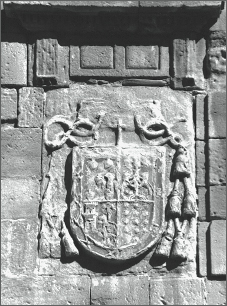
Arms of the Friar Bishop Pedro de Perea y Dez de Medina, Capilla del Sagrario, sculptured by Domingo de Arregui, Briones. (Author)
Among the presbyters who had supported the Friar Bishop was an Andalusian, Miguel Prez Romero, whom he appointed to administer his diocese when he was later forced to travel to the viceregal capital at Lima to face the censure of both the Viceroy and the colonys Archbishop. The relationship had further been strengthened by the subsequent marriage of the presbyter Romeros daughter to the Bishops nephew Don Pablo Dez de Medina, a hidalgo and lawyer from his native township of Briones, in La Rioja. On 28 May 1630, the Friar Bishop died at Lima. His will shows him to have left much of his considerable fortune to the Augustinian convent at Burgos and to the church at Briones for the founding of a chapel, and where his sculptured features can still be seen under a grill awning of his coat of arms, bearing the ten Moors heads and title name of his family, awarded his ancestor for killing single handed ten Moors in the medina, citadel, of the castle of Tscar, in the reconquest of Andalusia.
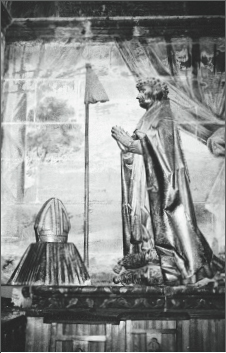
Sculpture of the Friar Bishop by Juan Bazcardo, Capilla del Sagrario, Briones. (Author)
Shortly before the Friar Bishops death a manuscript had come into his possession, which, because of its antiquity and historical interest, he had entrusted to the care of his fellow Augustinian Antonio de la Calancha y Benavides. A creole from Sucre, Calancha had for several years been researching Inca history and traditions, together with his Orders missionary role in Peru. The manuscript, written a year after the defeat of the Spanish Armada, was addressed to King Philip II, and was the last will and testament of the Conquistador Mansio Serra de Leguizamn, the grandfather of the presbyter Romeros wife.
Among the other papers in the possession of Romeros wife was a copy of her grandfathers probanza de mritos, his testimonial of his past service to the Crown, also addressed to King Philip II. The 154 folio pages record the testimony of twenty witnesses, six of whom had been present with him at the killing of the Inca Atahualpa at Cajamarca, and several of whom had been pardoned for their part in the rebellions against the Crown which had lasted intermittently for seventeen years. The text, published for the first time, forms the basis of a portrait of an almost unknown soldier, who had been the last conquistador to die in Peru, and, as his will demonstrates, one of the very few of Pizarros veterans to have expressed his remorse for his role in the conquest of the Incas.
See Appendix 1.
See Appendix 2.
A CKNOWLEDGEMENTS
Principally I acknowledge my mother, without whose encouragement this book would never have been written. I would also like to thank Luis Roldn Jordn and Josefa Garca Tovar, of the Seminario de Historia Local de Pinto, Madrid. I am grateful to my brother Alexander Stirling and Nicholas du Chastel for taking photographs for me in La Paz, Potos and Cuzco. I am also grateful to Dr Barry Taylor, of the British Library, for his advice and the staffs of the Archivo General de Indias, Escuela de Estudios Hispano-Americanos, Seville, the Archivo Nacional de la Nacin, Lima, Canning House, the British Library and the Institute of Historical Research, London.
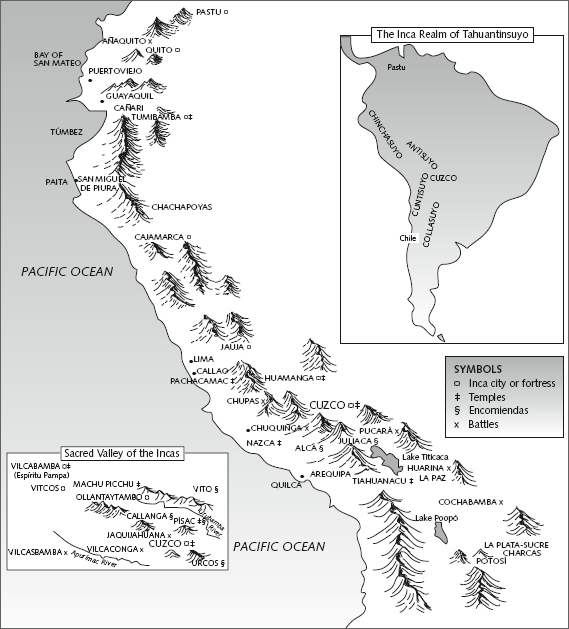
Map of Peru.

H EIRS OF THE C ID
When in ancient or modern times has so great an enterprise been undertaken by so few against so many odds, and to so varied a climate and seas, and at such great distances, to conquer the unknown?
Francisco Lpez de Jerez
Verdadera relacin de la conquista del Per
The history of Spains conquest of the Inca empire of Tahuantinsuyo is as much a history of the destruction of a civilization as it is of its protagonists and victims: conquistador and Indian alike, some of whose names are recorded by history, and others forgotten in the faded parchments of some distant archive. As with much of colonial history, it was a history of a conquered people written by its conquerors, and revised in part by the chronicles of later missionaries and Crown officials. Almost nothing in any great biographical detail is recorded of their lives. As illiterate as the people they had conquered, their silence was to prove their greatest defence of the wealth they accumulated, and of the inhumanity with which they had established their empire: a social and economic infrastructure which would still be evident in Andean America until the agrarian reforms of the present century.
Next page
